Peperomia is a popularly grown, low-maintenance house plant with very colorful foliage. There Is a lot of controversy regarding the Peperomia Silver Ripple and Frost plant species.
They are both non-parasitic ornamental epiphytes of the genus Peperomia caperata. The two are distinct mutations of the same species differing in colors and plant types. Some of these plants are amazingly parallel, while others are widely varied. These plants both have lots of leaves on them, and they grow in a heap-like form.
Peperomia Silver Ripple and Frost are related to the Peperomia Caperata, so they have some similar features. These two are very stimulating plants with thick and bold stems; they are fleshy, evergreen, and highly resilient.
Peperomia Frost is an evergreen perennial flowering plant species that looks good as a garden plant. It has attractive foliage that makes any space look very beautiful and colorful. These plants can be grown indoors or put out during summer as long as they get access to filtered or indirect light.
It is a low-maintenance plant with a mounding habit, meaning that it expands both vertically and horizontally, hence the round, mound-like appearance. It is suitable for terrariums of fairy gardens and for growing indoors in large spaces. This plant is easily propagated and is a very distinct plant.
Peperomia Silver Ripple vs Frost: Difference
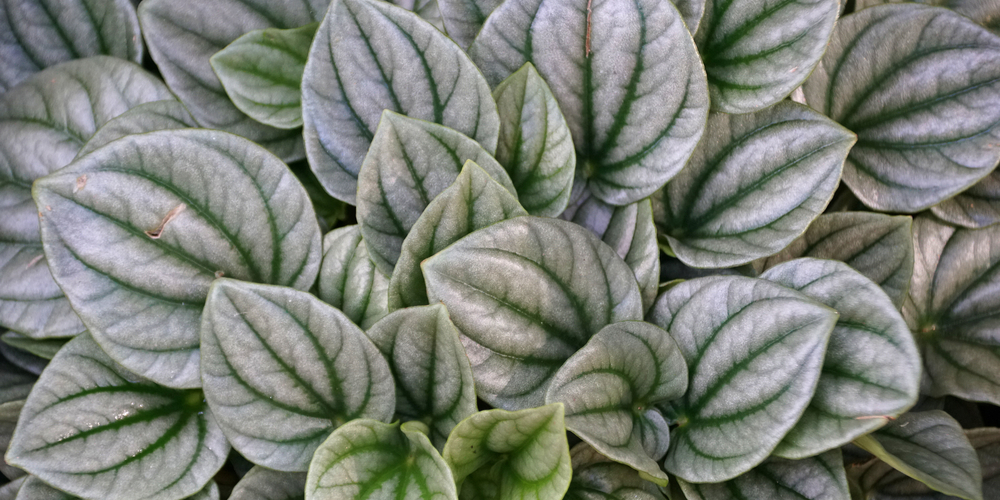
Key Takeaways
- Describes the visual differences between Peperomia Silver Ripple and Frost.
- Highlights their ease of care and suitability for indoor environments.
- Notes the importance of understanding specific care requirements for thriving.
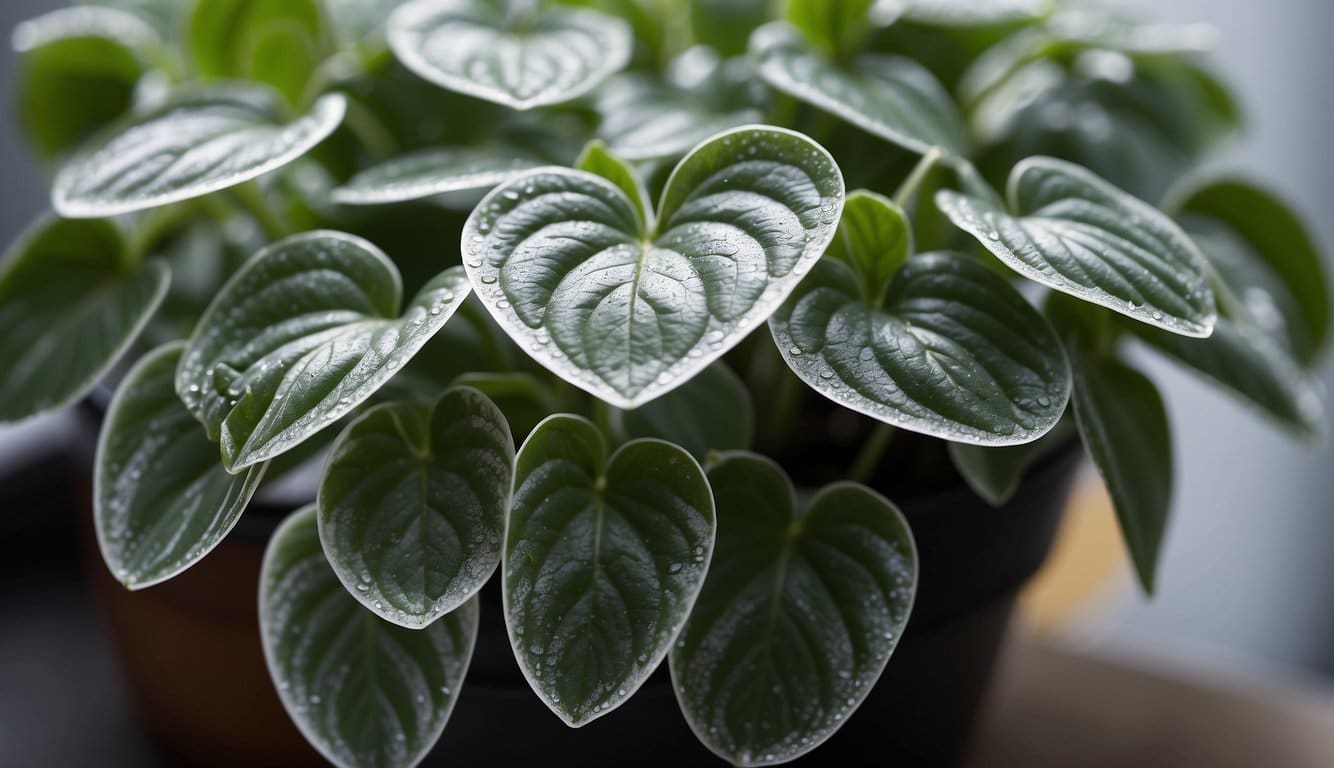
In identifying the Peperomia Silver Ripple and Frost, one must examine their distinct visual features, understand their growth patterns, and recognize their optimal growing conditions to ensure successful cultivation.
Visual Characteristics
Peperomia Silver Ripple: This cultivar is renowned for its heart-shaped leaves with a notable silvery sheen and pronounced ripple effect. The foliage typically exhibits a combination of silver and green hues.
Peperomia Frost: On the other hand, Peperomia Frost is characterized by its darker blue-green leaves, which have a soft, frosted appearance. The leaves are less wavy compared to the Silver Ripple and possess a subtle white or silver variegation.
Growth Patterns
Peperomia Silver Ripple:
- Size: Generally compact, with leaves that can grow to be about 4 inches in length.
- Growth Rate: Tends to be slightly faster-growing than the Frost variety due to its succulent leaves that store more water.
Peperomia Frost:
- Size: Also maintains a petite stature, but leaf size can vary.
- Growth Rate: Known as a slow grower, the Frost variety takes time to reach its full leaf size and bushiness.
Optimal Growing Conditions
Peperomia Silver Ripple:
- Light: Thrives in bright, indirect light but can tolerate lower light conditions.
- Water: Prefers to dry out slightly between waterings due to its succulent-like leaves.
- Temperature: Enjoys warmer temperatures and is slightly more tolerant of dry heat.
Peperomia Frost:
- Light: Best in bright, indirect light to maintain the frosted look of its leaves.
- Water: Requires consistent moisture but is susceptible to overwatering, so well-draining soil is essential.
- Temperature: Prefers moderate to warm temperatures; extreme cold can damage the delicate leaves.
Care and Maintenance
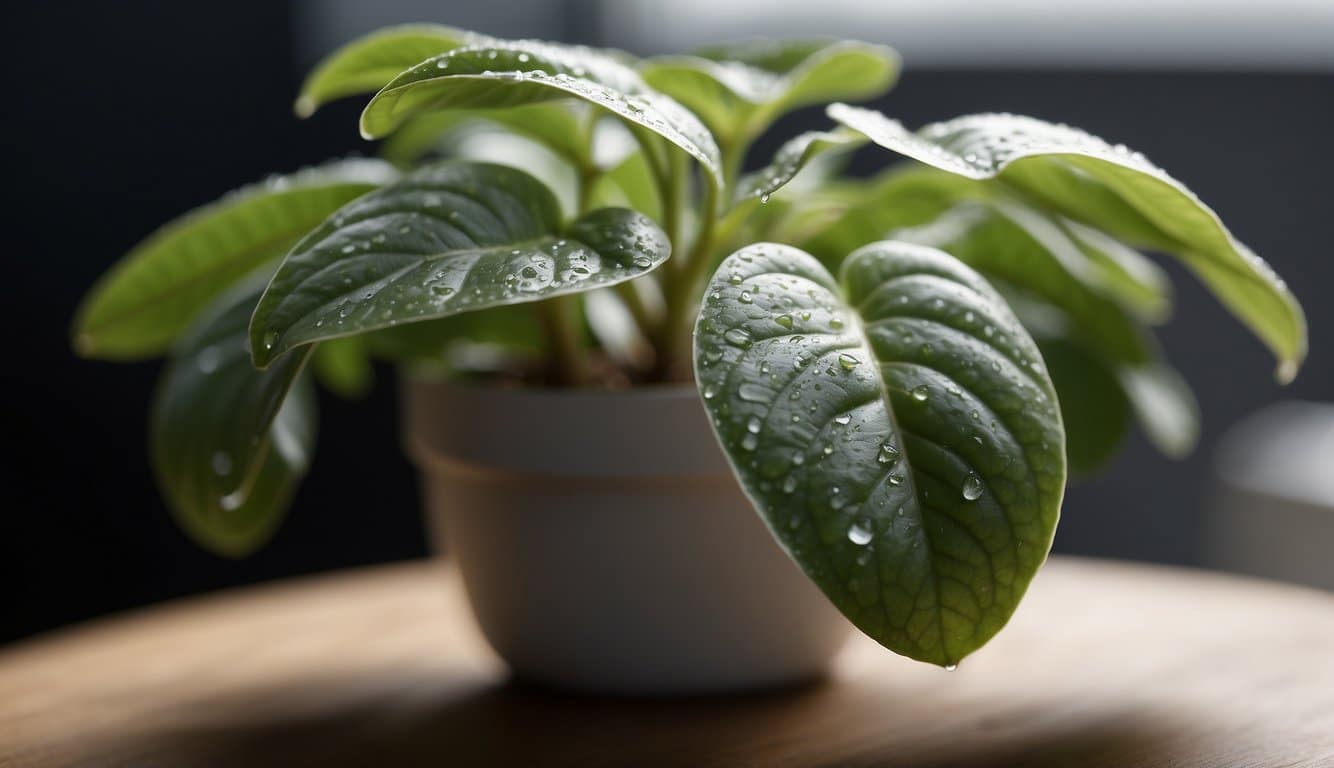
Proper care ensures that both Peperomia Silver Ripple and Frost thrive. These Peperomias have specific needs regarding watering, light exposure, soil composition, and climatic conditions.
Watering Requirements
The Peperomia Silver Ripple and Frost should only be watered when the top inch of soil feels dry to the touch.
Overwatering is a common issue and can lead to root rot, so it’s imperative to ensure the plants are not left sitting in water.
A moderate approach to watering—allowing the soil to dry out between water sessions—promotes healthy growth.
Lighting Needs
Both varieties flourish in bright, indirect light.
While the Silver Ripple can tolerate low-light conditions to some extent, consistent access to natural, filtered sunlight is ideal. Direct sunlight should be avoided as it can scorch the delicate leaves of these plants.
Soil and Fertilization
A well-draining soil mix is crucial for Peperomia plants to prevent water retention around the roots. Incorporating perlite or coarse sand can improve drainage.
Fertilization should be light; applying a balanced, water-soluble fertilizer every other month during the growing season is sufficient.
In winter, it’s best to withhold fertilizers to avoid stressing the plants when they are not actively growing.
Temperature and Humidity Preferences
Peperomia Silver Ripple and Frost prefer a consistent temperature range between 65-75°F (18-24°C).
These plants do well in average home humidity levels but appreciate a boost in humidity, which can be provided by a humidifier or pebble tray.
Sudden temperature drops or cold drafts should be avoided to maintain their health and appearance.
Propagation Techniques
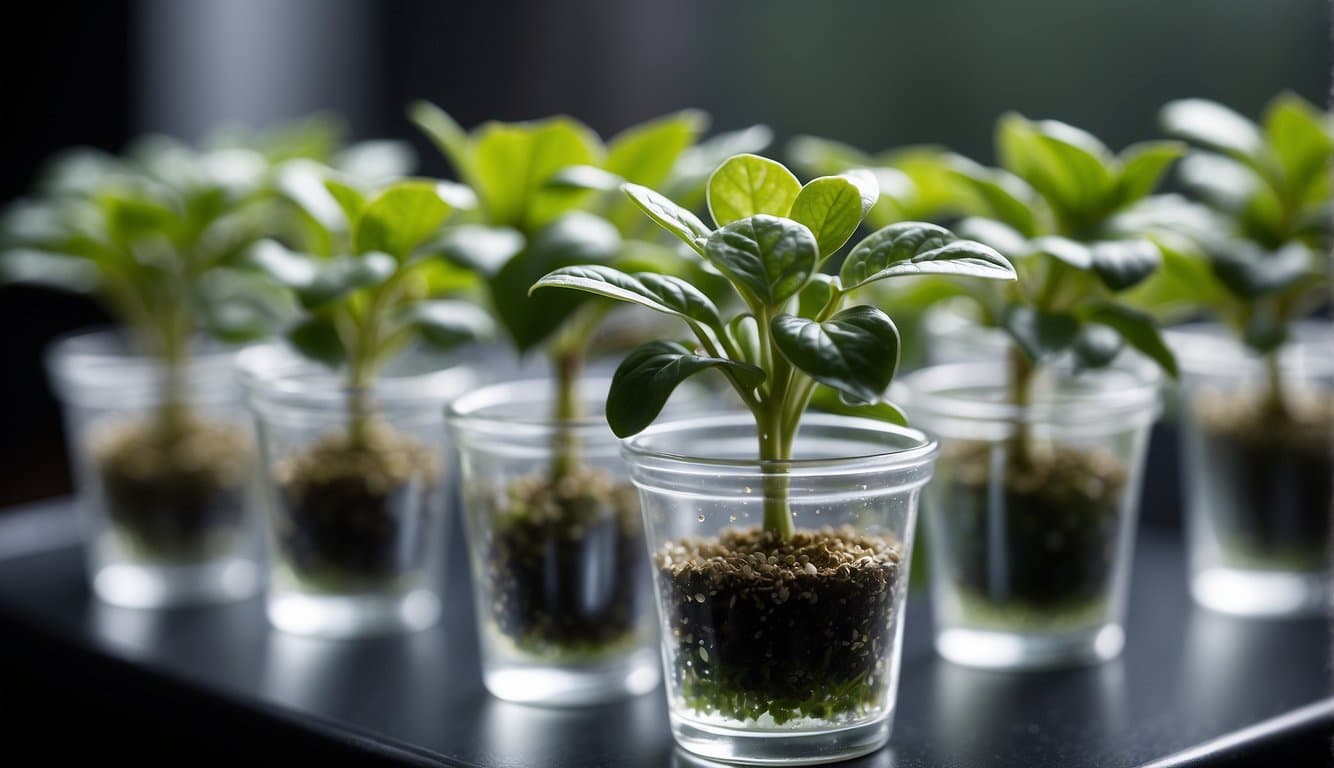
Peperomia Silver Ripple and Frost both offer a desirable set of characteristics for home gardeners, thanks to their unique textures and leaf patterns. These varieties, while visually distinct, share similar propagation methods. For successful cultivation, enthusiasts can use leaf cuttings, stem cuttings, or division.
Leaf Cuttings
Leaf cuttings are ideal for the propagation of both Peperomia Silver Ripple and Frost. The process involves:
- Selecting a healthy leaf with an attached stem portion.
- Placing the cutting into moist soil, ensuring the stem portion is buried.
This technique allows the new roots and foliage to emerge from the stem. Non-variegated Peperomia cultivars are best suited for this method as they maintain their leaf patterns through propagation.
Stem Cuttings
Stem cuttings require:
- A healthy stem with several leaves.
- Insertion into either water or soil to initiate root growth.
For water propagation, it’s crucial to change the water regularly to prevent bacterial growth. When rooting in soil, the cutting should be kept in a warm environment with indirect sunlight.
Division
Division involves separating a mature Peperomia plant into smaller sections, each with its own root system. The process is straightforward:
- Carefully remove the plant from its pot.
- Separate the roots into sections, ensuring each has foliage.
Once divided, each section can be planted in its own container. This method is quick and does not stress the plants as much, allowing for a faster recovery and growth period. Division is usually done during repotting.
Frequently Asked Questions
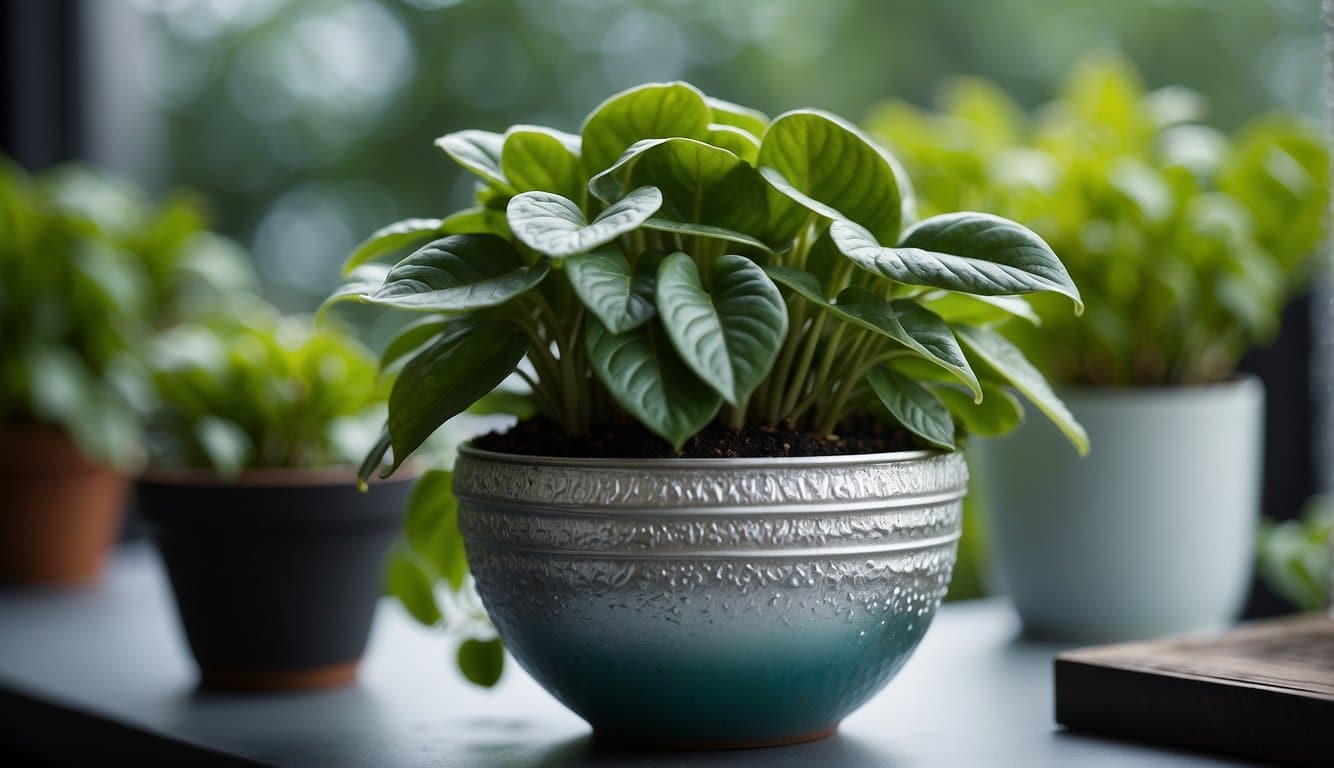
These questions aim to clarify the differences, care, and characteristics of Peperomia Silver Ripple and Peperomia Frost for enthusiasts looking to understand more about these popular houseplants.
What are the key differences in size between Peperomia Silver Ripple and Peperomia Frost?
The Silver Ripple is known for its ruffled leaves with pronounced silver patterning, while Frost has smaller, heart-shaped leaves with a frosted appearance. Both exhibit compact growth, yet the Silver Ripple’s leaves tend to be slightly larger and more prominent.
What are the distinct care requirements for Peperomia Silver Frost?
Peperomia Silver Frost prefers bright, indirect light and needs well-draining soil to prevent root rot. Consistent, moderate watering is essential when the soil is partially dry, and high humidity levels are beneficial for their growth.
How does Peperomia Silver Frost compare to Peperomia Moonlight in terms of appearance and growth habits?
Peperomia Frost has a distinctive silver leaf coloration and a tight, clustered growth pattern. In contrast, Peperomia Moonlight showcases more of a pale green hue and more spread out foliage. Both prefer similar light conditions but have slightly different visual appeals.
What are some tips for optimizing the care of Silver Ripple Peperomia?
To maintain the beauty of Silver Ripple Peperomia, give it moderate to bright indirect light and let the soil dry out between waterings. It also benefits from regular misting or a pebble tray to increase ambient humidity.
What common issues should one look out for when growing Peperomia Frost plants?
Over-watering is the most common problem with Peperomia Frost, leading to root rot. Pests like mealybugs and spider mites can also affect the plant, so they should be monitored closely and kept in proper airy conditions to prevent infestations.
How does Peperomia Frost’s rarity compare with other peperomia varieties?
Peperomia Frost is relatively easy to find and not as rare as some of the more exotic peperomia varieties.
However, its unique appearance does attract plant enthusiasts. Therefore, it may sometimes be sought-after more than other common varieties.